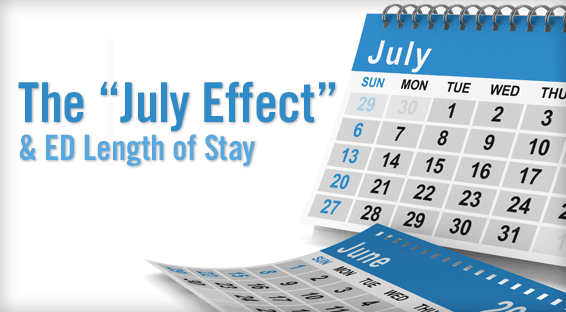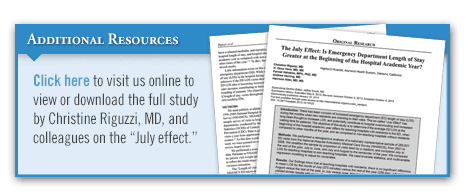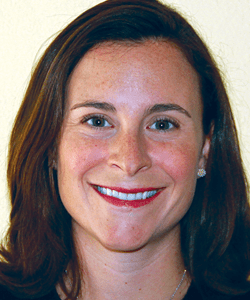Throughout the medical community, the “July effect” or “July phenomenon” is a well-known entity in which it is believed that the month of July is a poor time to be cared for in the hospital because trainee doctors are beginning their new roles. As medical students move up the ranks in July, their amount of collective experience in the hospital is less than the months before this time. “Anecdotal evidence suggests that the July effect may be responsible for higher rates of errors, resulting in poor outcomes,” explains Christine Riguzzi, MD.
Previous studies have looked at morbidity and mortality, surgical outcomes, hospital length of stay (LOS), and hospital charges early in the academic year as compared with other times of the year, but these investigations have yielded mixed results. “The July effect has been examined in various clinical settings, such as surgery, but little is known about it with regard to the ED setting,” Dr. Riguzzi says.
A Retrospective Analysis
Dr. Riguzzi and colleagues conducted a study to assess if LOS varied throughout the year at teaching and non-teaching EDs. Published in the Western Journal of Emergency Medicine, the retrospective analysis involved a nationally representative sample of 283,621 ED visits from 2001 to 2008. The study compared July to the rest of the year, July to June, and July and August to the remainder of the year.
According to the results, there was no significant difference in the average LOS for the month of July versus the rest of the year, July and August versus the rest of the year, or July versus June at teaching hospitals with residents. Similar results were also observed at non-teaching hospitals. However, a significant difference was found in the average LOS at teaching hospitals as compared with non-teaching hospitals (260 vs 185 minutes) throughout the year. LOS was higher when more residents were responsible for patient care.
Assessing Implications
“Our study adds to the argument that the July effect is a difficult phenomenon to observe and quantify,” says Dr. Riguzzi. “In our analysis, patients spent the same amount of time in the ED regardless of the time of year. Whether the July effect actually exists or is simply a belief based on anecdotes is hard to establish definitively.”
Dr. Riguzzi recommends that future research consider variables other than LOS that may contribute to the July effect phenomenon. “For example,” she says, “studies should consider including the rates of test ordering, the experience level of providers, and patient sign outs at change of shift. It may also help us to explore unexpected return visits to the ED.” In the meantime, ED clinicians should recognize that the July effect does not appear to be a clinically significant entity.




 TimH
TimH